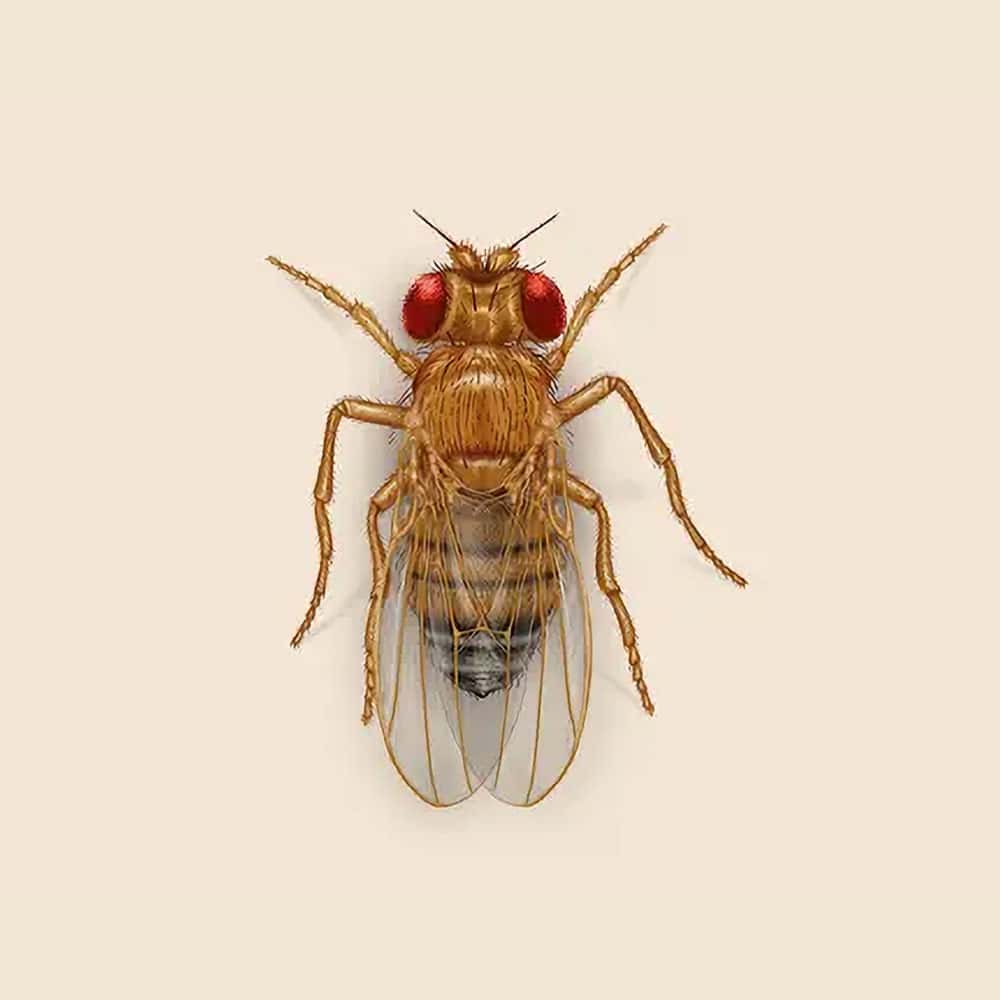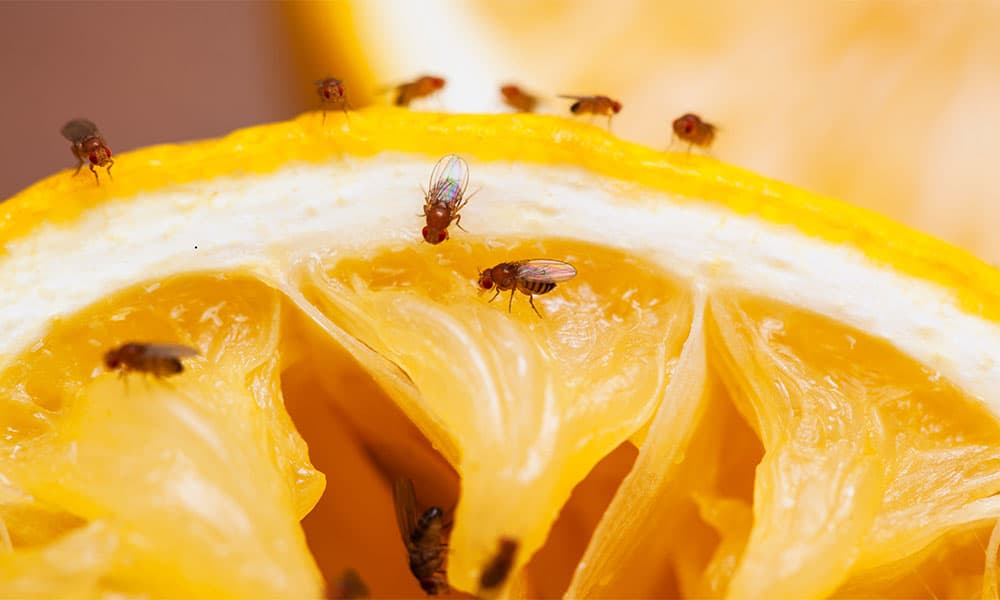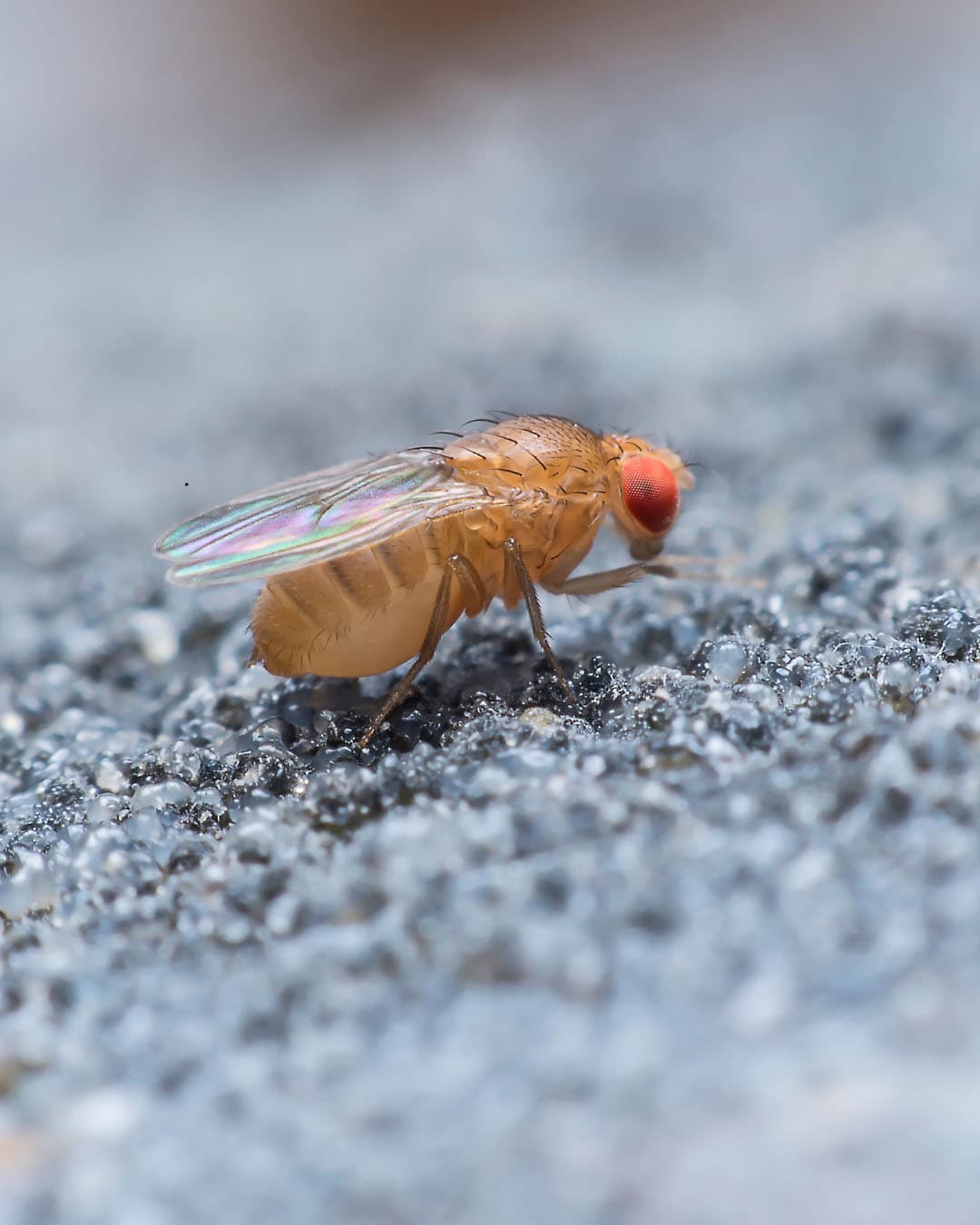Fruit Fly Facts & Information
Fruit flies, small and persistent pests, are notorious for their ability to invade homes and commercial spaces in search of food and breeding sites. Their rapid reproduction and attraction to ripe or decaying fruit make them a common and challenging pest to manage.

Family Drosophilidae
What You Need To Know About Fruit Flies
What do fruit flies look like?
Fruit flies, also known as Drosophila melanogaster, are tiny insects, typically measuring about 1/8 inch in length. They have a distinctive appearance with a tan to light brown body and large, red eyes. Their wings are clear with a slight smoky coloration, and their bodies are covered in fine, short hairs.
What do fruit flies eat?
Fruit flies are primarily attracted to fermenting and decaying organic matter. Their diet includes overripe or rotting fruits, vegetables, and other sugary substances. They are also known to feed on food residues and spills in kitchens, including beer and wine.
What sort of habitat do fruit flies live in?
Fruit flies are commonly found in and around areas where food is stored or prepared. They thrive in environments with readily available food sources, such as kitchens, fruit bowls, garbage disposals, and compost bins. Outdoors, they may be found around decaying organic matter or fermenting fruits.
How do fruit flies commonly behave?
Fruit flies are highly attracted to fermented foods and sugary substances, which they use for breeding. They are known for their quick, erratic flight patterns and their ability to reproduce rapidly. Female fruit flies lay hundreds of eggs on fermenting food sources, and the larvae feed on the decaying matter before maturing into adults.
Did you know this about fruit flies?
Fruit flies are often used in scientific research due to their rapid reproduction cycle and genetic simplicity. They have been instrumental in studies of genetics, development, and behavior. Interestingly, fruit flies can detect and be attracted to specific chemical compounds emitted by ripening fruits, which helps them find their preferred food sources. Their ability to breed quickly and their attraction to fermenting substances make them a common and persistent pest in homes and food processing environments.
Understanding Fruit Fly Infestations
Understanding fruit fly infestations is essential for effective control. Fruit flies are tiny, typically 1/8 inch long, with tan or light brown bodies and red eyes. They are commonly found around overripe or rotting fruit, vegetables, and other fermenting organic matter. Fruit flies can quickly become a nuisance as they breed rapidly and their larvae develop in decaying organic material.

How Hearts Handles Fruit Fly Treatment
Hearts Pest Management employs an integrated pest management approach to handle Fruit Fly infestations.
Fruit Fly Inspection
Fruit Fly Treatment
Fruit Fly Prevention
Educational Resources

Think You Might Have a Fruit Fly Infestation?
At Hearts Pest Control, we understand the challenges associated with Fruit Fly infestations and are here to provide professional solutions tailored to your needs. Flourishing in warm and humid climates, they are prevalent in many regions, including San Diego County, Orange County, and Los Angeles County.